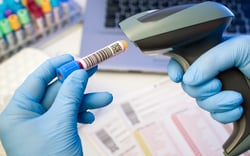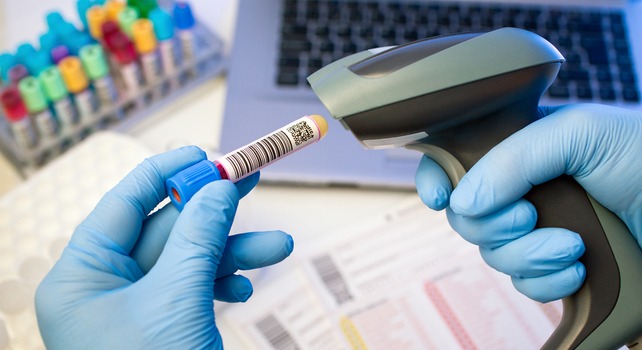
Life science and pharmaceutical companies are under increasing pressure to reduce costs and improve efficiency. There is no doubt that barcode labelling is one of the most prevalent and straightforward methods to achieve cost reduction and increased efficiency. Barcode labelling significantly enhances data collection and management, streamlines inventory management and substantially reduces the risk of human errors. Barcode-based sample management systems have gained extensive use in biotechnology and pharmaceutical laboratories and, combined with a good laboratory inventory management system, companies can provide several benefits:
- Efficiency & cost-effectiveness
- Minimizing human error margins
- Increased reproducibility
- More effective collaboration
Efficiency & cost-effectiveness
Using unique barcodes is a valuable tool for labelling and tracking samples in your laboratory. It significantly simplifies the process of tracking the correct samples and types of equipment that are needed to perform experiments. No matter if the project involves a few or thousands of samples, tracking them by barcode accelerates the process and eliminates mistakes.
Running an inventory with barcodes enables employees to swiftly locate samples while accessing crucial details such as price and supplier information, in addition to real-time inventory monitoring and updating. This results in greater efficiency as it allows better control of inventory purchases.
Minimizing human error margins
Laboratories that depend on manual data entry for their sample management systems face the inherent risks of human errors, including the input of incorrect numbers, illegible handwriting, missing lines, or omitting crucial information. Subsequently, valuable time is squandered in identifying and rectifying these errors. The integration of barcodes into the sample labeling process serves as a powerful solution to mitigate these challenges.
Barcodes play a pivotal role in almost eradicating human errors associated with sample management. Beyond error reduction, they significantly enhance operational efficiency by expediting the sample retrieval process. Barcodes can be swiftly scanned, providing an efficient and accurate method for identifying and locating samples. This not only minimizes the probability of errors but also contributes to time savings, ensuring a more streamlined and error-resistant sample management workflow in laboratories.
INCREASED Reproducibility
The challenge of reproducing experiments, particularly in fields like cancer research, has garnered significant attention.
Sample barcode scanning offers a valuable tool for enhancing the reproducibility of experiments. By creating an accurate list of the stock used, including all the information, the process of replicating an experiment becomes more straightforward. The integration of barcode scanning ensures a detailed understanding of the reagent used, and how it was kept or produced. When combined with a good laboratory sample management system, this can help achieve fuller and more accurate information as all data is linked and saved in one place leading to greater confidence in the reproducibility of results.
MORE EFFECTIVE Collaboration
Samples are often used in several experiments by several staff members and may also be shared with other collaborators in the laboratory. The implementation of sample barcoding serves as a crucial tool in ensuring comprehensive awareness among the entire team. Scientists can swiftly identify the specific sample utilized in an experiment and locate its position within the laboratory, mitigating the risk of misplacement. Additionally, finished samples can be marked as consumed. This ensures a systematic and organized workflow, preventing any interference between collaborators. The organized approach facilitated by barcoding contributes to a collaborative environment, streamlining the work process and enhancing overall efficiency within the laboratory.
Barcode scanning with Labguru’s sample management system
.png?width=625&height=502&name=Labeling%20System%20(1).png)
Labguru allows you to easily track your samples, tubes, boxes or anything you need to track in your lab by printing barcode labels directly from Labguru using Labguru Label Wizard. With Labguru Label Wizard, you are in control. You can design your own templates and control label sizes and what stock information the label will contain. You can scan barcodes of your samples and equipment, include details of their physical location, and quickly add them to experiments. You can connect any scanner or handheld device that will read barcode code 128. Adding barcodes to Labguru is easy and can be done manually or by importing. Once you have your samples labelled with barcodes, you can quickly retrieve the sample information and keep track of your inventory within Labguru.
For more information about Labguru ELN, inventory and sample management systems –


%20(4).png)
.png)
